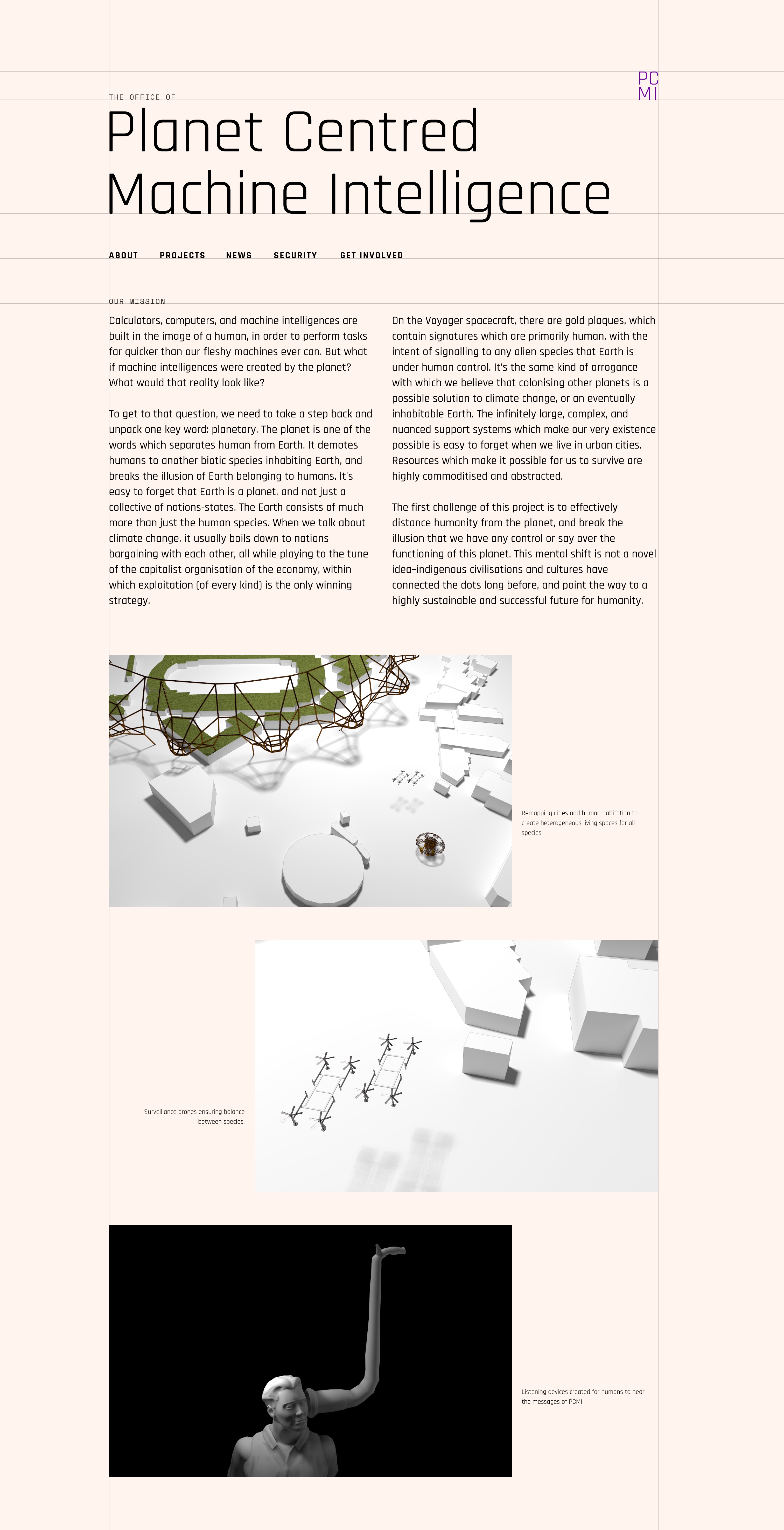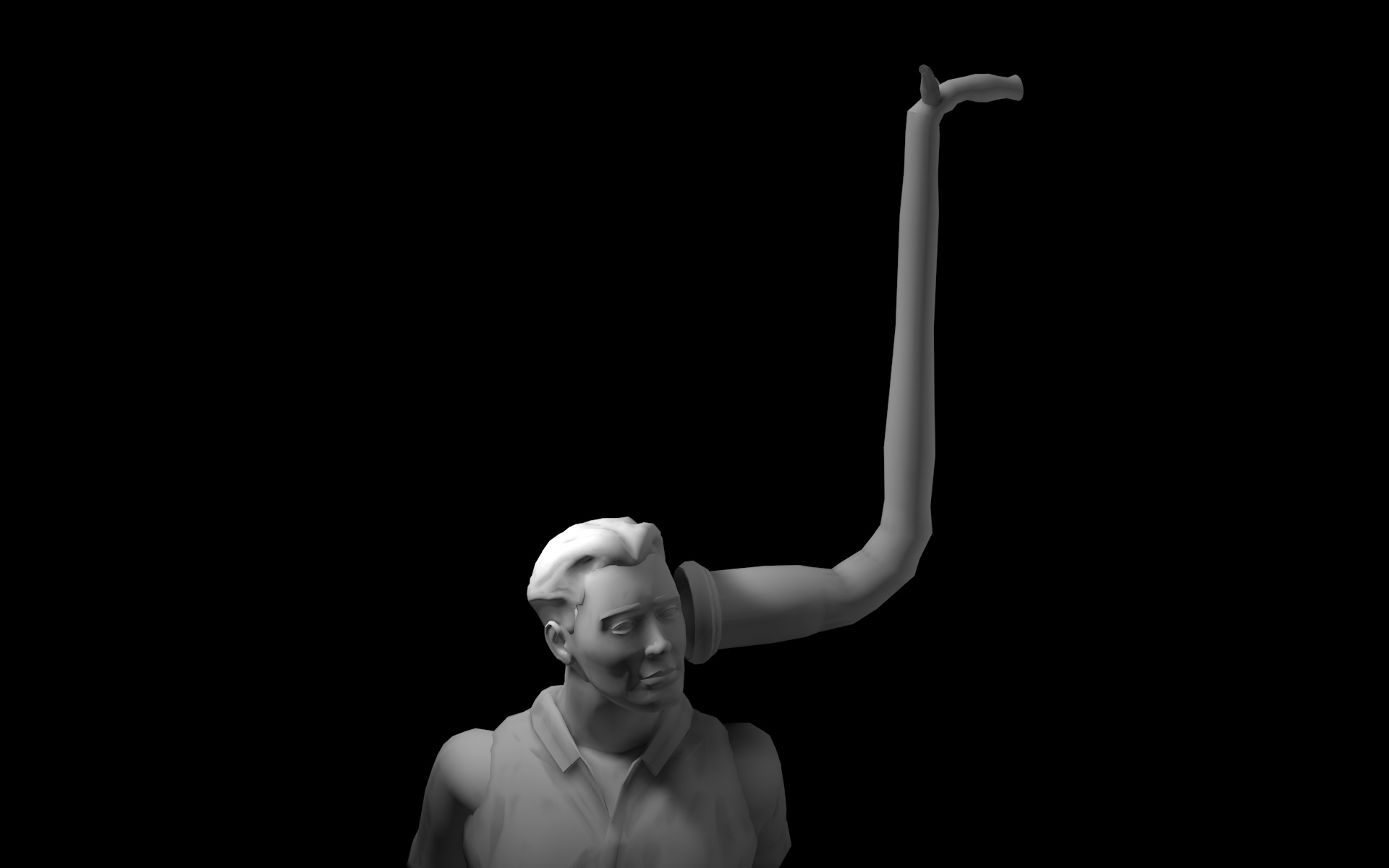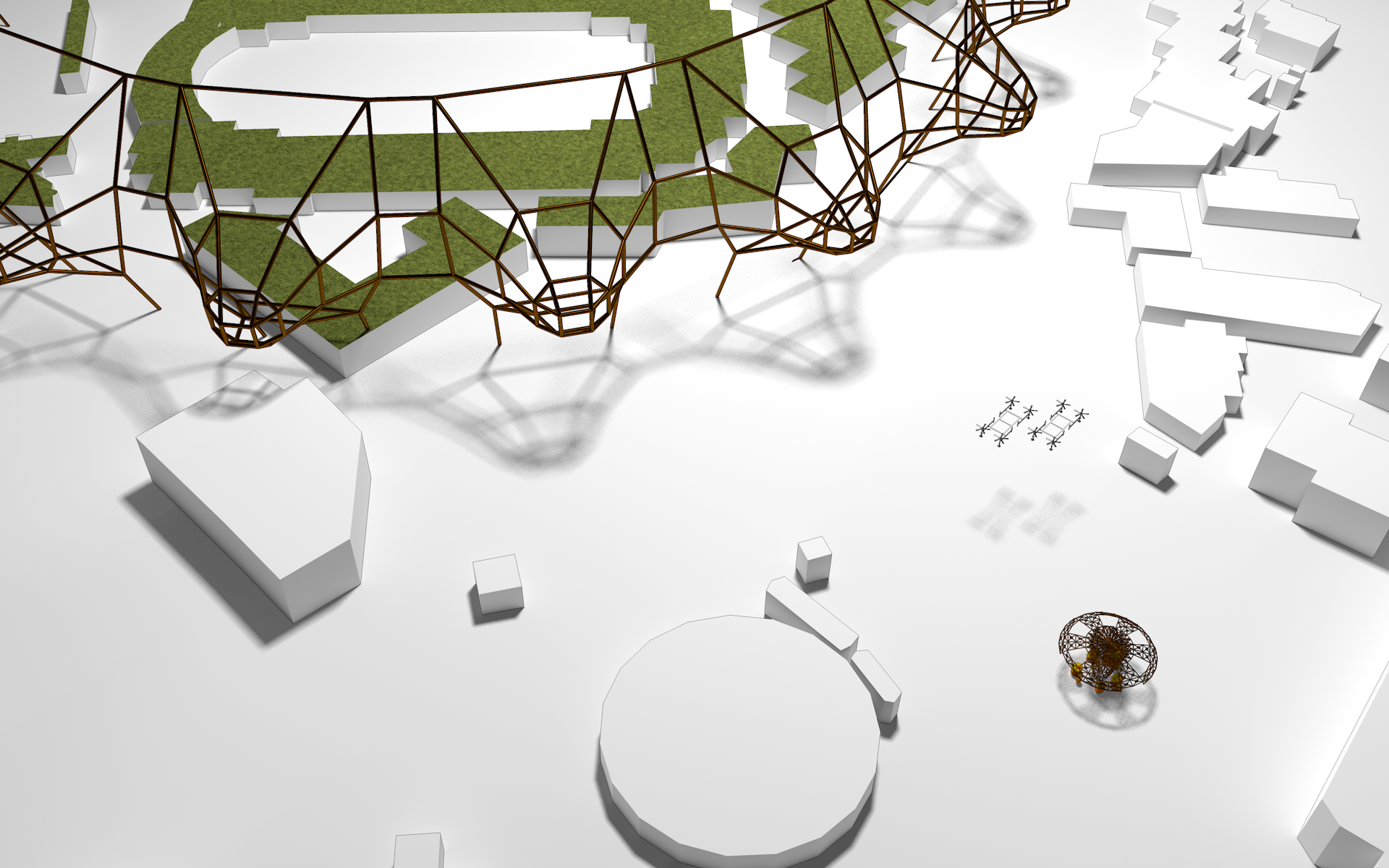Final Project Description
Concept Note
Calculators, computers, and machine intelligences are built in the image of a human, in order to perform tasks far quicker than our fleshy machines ever can. But what if machine intelligences were created by the planet? What would that reality look like?
To get to that question, we need to take a step back and unpack one key word: planetary. This is one of the few words which separates humans from Earth. The word ‘planetary’ implies the planet being an independent entity on its own. It demotes humans to another biotic species inhabiting Earth, and breaks the illusion that our current thought patterns and dominant ways of thinking which position humans having any control or say over the functioning of this planet.
It’s easy to forget that Earth is a planet, and not just a collective of nations-states. The Earth consists of much more than just the human species. When we talk about climate change, it usually boils down to nations bargaining with each other, all while playing to the tune of the capitalist organisation of the economy, within which exploitation (of every kind) is the only winning strategy.
On the Voyager spacecraft, there are gold plaques, which contain signatures which are primarily human, with the intent of signalling to any alien species that Earth is under human control. It’s the same kind of arrogance with which we believe that colonising other planets is a possible solution to climate change, or an eventually inhabitable Earth. The infinitely large, complex, and nuanced support systems which make our very existence possible is easy to forget when we live in urban cities. Resources which make it possible for us to survive are highly commoditised and abstracted.
The first challenge of this project is to effectively distance humanity from the planet, de-center the human and break the illusion that we have any control or say over the functioning of this planet. This mental shift is not a novel idea–indigenous civilisations and cultures have connected the dots long before, and point the way to a highly sustainable and successful future for humanity.
The advent of advanced machine intelligence poses an intriguing question for our future. It is clear that we are well on our way to building an intelligence far greater than ours, but what will we eventually use it for? Can we think of a future where the capitalist organisation of the economy is no longer the dominant one? Or a future where we recognise that the health of various assemblages (biotic, abiotic, machines) of this planet are critical to everyone’s survival? The human-dominant narratives of the planet, one of them being globalisation present the planet as a resource. Can we shift from globalisation to planetary? Will machine intelligences be critical in this process as mediators?
This project is a speculative one, with the intention of creating heterogeneous visions of the future to help us reflect on current reality and hopefully nudge us toward a more sustainable path.
Methodology
The primary objective of this project is to create a speculative reality which gets viewers to reflect on the current state of affairs, in order to imagine the changes we’d need to make in order to create the speculative one being presented to them. If it gets viewers to ask more questions and think of other possibilities, all the better. This project aims to be a refusal of realism, hoping to spark imaginative thought, an increasingly scarce resource. (taken from the essay Designing Fiction when Reality Itself Is No Longer Realistic by Dunne and Raby).
Science fiction is a domain which lives and breathes speculative thinking, often in the form of stories. These usually rely on a bevy of narrative tools to immerse the viewer in these carefully crafted worlds, providing a smooth transition from the reader’s reality to the speculative one. Another approach, detailed by Dunne and Raby is that of ‘aesthetics of unreality.’ By presenting the viewer with something from a speculative reality, devoid of context or description, it attempts to send the viewer on a journey, encouraging them to imagine the reasonings for what they see.
The monolith from 2001: A Space Odyssey is a great example of this. It appears to be a rectangular cube, made of a metallic substance, but beyond that not much is explained. As the viewer, we try to make sense of the object and start thinking of various reasons for the existence of the object. It is this very moment that this project needs to capture and reproduce. The journey of speculative thinking, which leads the viewer on an imaginative journey. Although often described as speculative design, it is in fact speculative thinking expressed through design. Theoretically this process might seem simple enough, but it’s far more difficult to accomplish in practice.
Project Plan
In order to encourage viewers to imagine a speculative reality in which humans coexist with other entities sustainably and successfully, the project uses the ruse of a Planet Centred Machine Intelligence (PCMI). In this reality, the PCMI enacts the will of the planet, executed through various entities under its control. The inner workings of this intelligence is not clearly specified, but is simply accepted as the norm in this reality. These visions of this world are expressed through imagined objects, artefacts and visuals.
The project will consist of many individual ideas and concepts, working together to create this imagined reality. Some of them will be a series of objects created for humans to interact with this planetary intelligence, others will be literature, pages from a diary of a diplomat working to secure human rights in the multi-entity conferences. There might also be some creations which escape this imagined reality and leak into ours, through websites, or fictional research papers funded by a fictional organisation working to make PCMI a reality.
Speculative artefacts will be produced on a weekly basis, using a wide range of mediums and processes. The intent is to end up with a comprehensive portfolio of concepts which will be exhibited.
 Fictional PCMI Organisation
Fictional PCMI Organisation
 Speculative listening device
Speculative listening device
 Re-imagining multi species urbanism
Re-imagining multi species urbanism